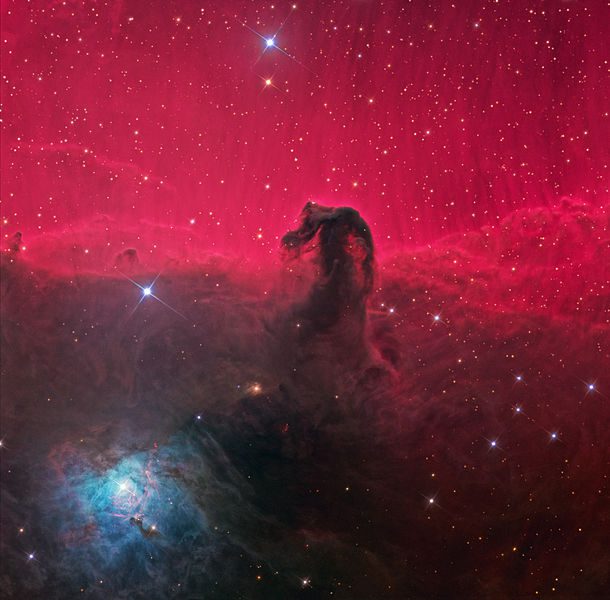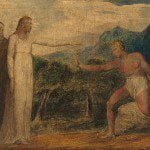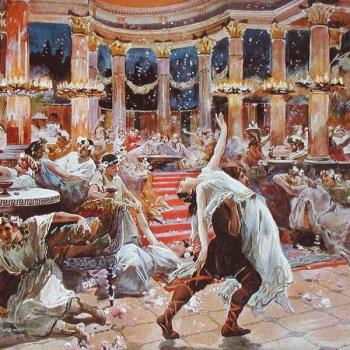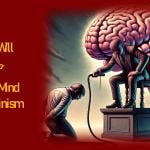
(Wikimedia Commons public domain image, Author: Ken Crawford)
***
Here, I share some passages that I marked when reading Thomas Dubay, The Evidential Power of Beauty: Science and Theology Meet (San Francisco: Ignatius Press, 1999), a while back:
[F]or science, beauty is objective, “out there”. Among the mechanistic suppositions of previous generations was the idea that beauty is an inner attitude of the beholder rather than a property of the objective world. The awareness that the universe is stunningly beautiful wherever we turn our eye is now so much a conviction of our most productive scientists that objective grandeur is considered a warrant of truth. (38-39)
For contemporary science the first trait of beauty is an elegant simplicity. In this context simplicity refers to an essential purity, a freedom from superfluities, useless accretions, and needless complications. Einstein’s theory of gravitation possesses this grace and propriety, whereas competing theories do not, and thus “none of them are taken seriously.” Astrophysicist Roger Penrose commented that “no rival theory comes close to general relativity in elegance or simplicity of assumption.” For the scientist simplicity implies both completeness and economy: “It must take into account all the facts and must include only what is necessary. Nothing lacking, nothing superfluous.” Notable in the field of mathematical physics, Henri Poincaré commented that “it is because simplicity and vastness are both beautiful that we seek by preference simple facts and vast facts.” (39-40)
The second scientific element is harmony. Albert Einstein went so far as to assert that “without belief in the inner harmony of the world there could be no science.” . . . There will likewise be symmetry, as a solid scientific theory “will harmonize many previously unrelated facts.” Werner Heisenberg adds that “the symmetry properties always constitute the most essential features of a theory.” (40)
Brilliance is the third element in science’s view of the beautiful. Augros and Stanciu explain that “a theory with this quality has great clarity in itself and sheds light on many other things, suggesting new experiments. Newton, for example, astounded the world by explaining falling bodies, the tides and the motions of the planets and the comets with three simple laws.” George Thomason adds that “in physics, as in mathematics, it is a great beauty if a theory can bring together apparently different phenomena and show that they are closely connected; or even different aspects of the same thing.” (40-41)
If there were only one lily in the world, and if it could be exhibited in the great cities across the globe for one month at a time, we can be confident that thousands upon thousands of people would be willing to wait in long lines, perhaps for hours, for the privilege of drinking in the splendor of that singular bloom close up and appreciating its delicate fragrance. But because there are millions of lilies and uncounted other species of flowers with their own millions of individual blooms, we are blasé and unimpressed. (150-151)
On a different topic:
Our visible universe, with its fifty billion galaxies, each of which on average has perhaps two or three billion huge stars, is made up of a limited number (109) of natural elements, kinds of atoms. Even more impressive, planet Earth, with its myriads of minerals, rocks, stones, and metals and millions of plant and animal species, raises the question of how we can account for this bewildering array of complex varieties with so few building blocks. Things that we experience daily are composed of about a dozen elements, and living things consist chiefly of four elements: carbon, hydrogen, oxygen and nitrogen. Whence the vast and deep differences among them? And how account for the striking diversities among the elements themselves? (49)
And on yet another topic:
Art demands an artist. Random chance has never explained a waltz or a symphony, a physical equation or an epic poem. It cannot. (65)
Michelangelo’s Pietà is light in stone. Its radiance not only delights the observer but also simultaneously shouts that it came about not by a chance erosion caused by unknowing elements of water and wind. Its form, integrity, proportion, and radiance declare both its message and the design of the master who produced it. (116)
And, changing subjects yet again:
John Henry Newman . . . remarked that most people “go not by argument, but by their sympathies”. I have noticed that when a view or stated position adversely affects one’s chosen lifestyle either directly or indirectly, it is the rare person who will give it open-minded consideration. This is the case not only among the general population but among academics as well. Total intellectual honesty is not in oversupply. “Everybody has his filter which he takes about with him,” noted Henri de Lubac, “through which, from the indefinite mass of facts, he gathers in those suited to confirm his prejudices. . . . Rare, very rare are those who check their filter.” (71-72)
We’re almost done for the evening:
A word about scientism, known also as positivism. The name can be deceiving, for scientism is decidedly not science. Rather it is a philosophy, or, better, an ideology that views the physical sciences as the sole source of human knowledge. This fantastic assumption is supported by not the least shred of scientific evidenced, indeed, not by any evidence. Well-known scholar Huston Smith has termed scientism the “world’s littlest religion”, because it diminishes whatever it touches. In this religion “a) Science is our sacral mode of knowing. b) The crux of science is the controlled experiment. c) We can control only what is inferior to us. d) Conclusion: science discloses only our inferiors, from which God is excluded by definition.” (91)
And here we go, finally:
In his study of the origins of atheism, John Courtney Murray concluded that “atheism is never the conclusion of any theory, philosophical or scientific. It is a decision, a free act of choice that antedates all theories.” There are not many positions I share with Jean Paul Sartre, but I do commend his honesty in not even attempting to cover up the lack of proof for his atheism — which is why he called it postulatory. (94)











